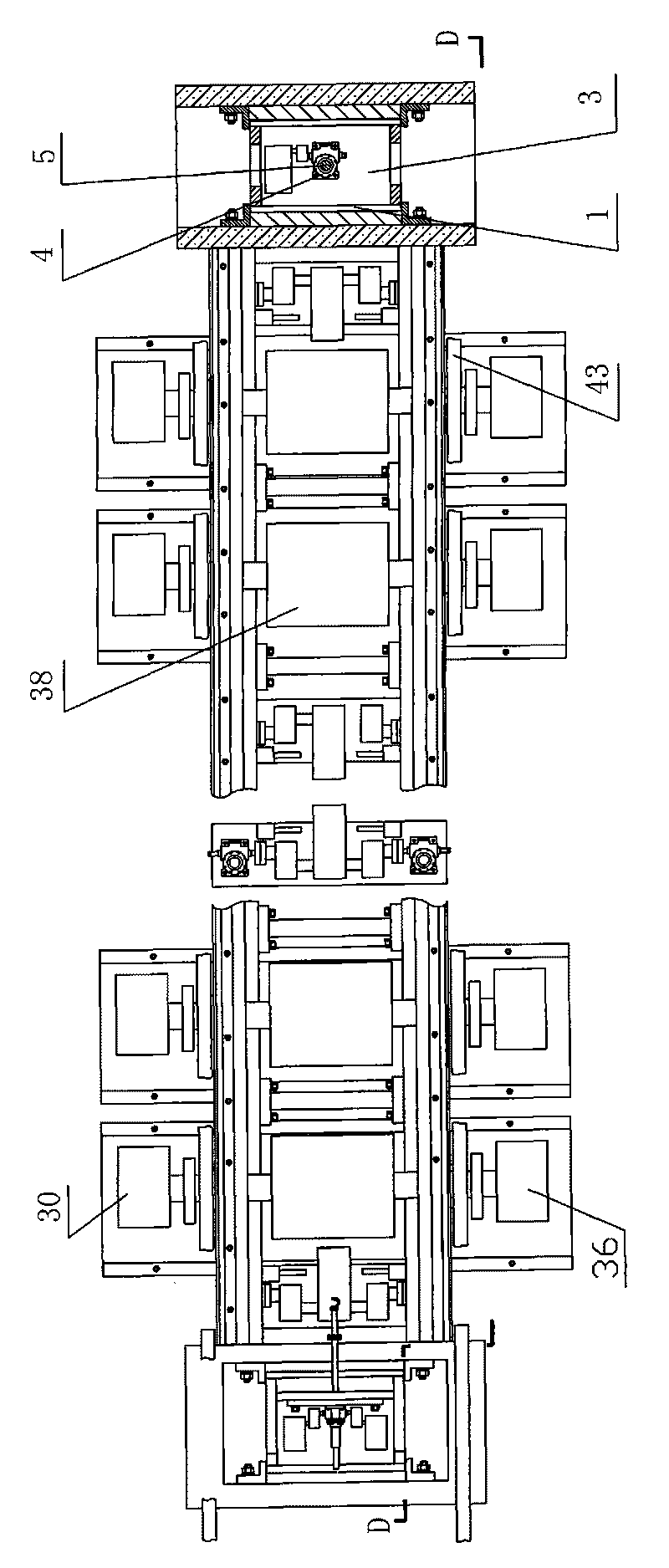Multi-locomotive fixing and rolling test platform
A technology for rolling test benches and locomotives, which is applied in railway vehicle testing and other directions, and can solve the problems of locomotive dynamic instability adjustment accuracy, time-consuming, and many mechanical parts, so as to shorten the preparation time for mechanical adjustments, reduce the horizontal footprint, The effect of simple mechanical structure
- Summary
- Abstract
- Description
- Claims
- Application Information
AI Technical Summary
Problems solved by technology
Method used
Image
Examples
Embodiment 1
[0056] figure 1 , 3 , 4 and 7 show that a specific embodiment of the present invention is: a multi-locomotive fixed rolling test bench, including two test bench positions A, B, wherein each test bench position A or B includes a pair of A test unit group consisting of a reaction force frame 1, an upper axle 2 and test units with the same number of wheel pairs 41 as a single locomotive.
[0057] The composition of all test units is that the shaft of the track wheel pair 43 supporting the locomotive wheel pair 41 is connected to the shaft of the wound asynchronous motor 36, and the diameter / length ratio of the wound asynchronous motor is greater than 1.
[0058] Figure 7 It is shown that the stator windings of each wound asynchronous motor 36 in each test unit group are connected in parallel to the stator three-phase busbar 53 of the asynchronous motor, and are connected to the power grid through a three-phase switch one 63; the rotor windings are connected in parallel to the ...
Embodiment 2
[0065] figure 2 , 3, 5, and 8 show that this example is basically the same as Embodiment 1, and the difference is only that the test bench positions are A, B, and C, among which there is a test bench position A as the main test bench position, and the main test bench position The shaft of the track wheel pair 43 in the test unit of position A is also connected with the shaft of the synchronous motor 30, the diameter / length ratio of the synchronous motor 30 is greater than 1, and the synchronous motors 30 of each test unit of the main test bench position are electrically connected The specific method is: the stator winding of the synchronous motor 30 is connected in parallel to the three-phase busbar 61 of the stator of the synchronous motor, and the three-phase busbar 61 of the stator of the synchronous motor is connected to three star-connected resistors 65 (i.e. three resistors) by three-phase switch seven 64 65 is not connected with the other end of the three-phase switch...
PUM
 Login to View More
Login to View More Abstract
Description
Claims
Application Information
 Login to View More
Login to View More - R&D
- Intellectual Property
- Life Sciences
- Materials
- Tech Scout
- Unparalleled Data Quality
- Higher Quality Content
- 60% Fewer Hallucinations
Browse by: Latest US Patents, China's latest patents, Technical Efficacy Thesaurus, Application Domain, Technology Topic, Popular Technical Reports.
© 2025 PatSnap. All rights reserved.Legal|Privacy policy|Modern Slavery Act Transparency Statement|Sitemap|About US| Contact US: help@patsnap.com



